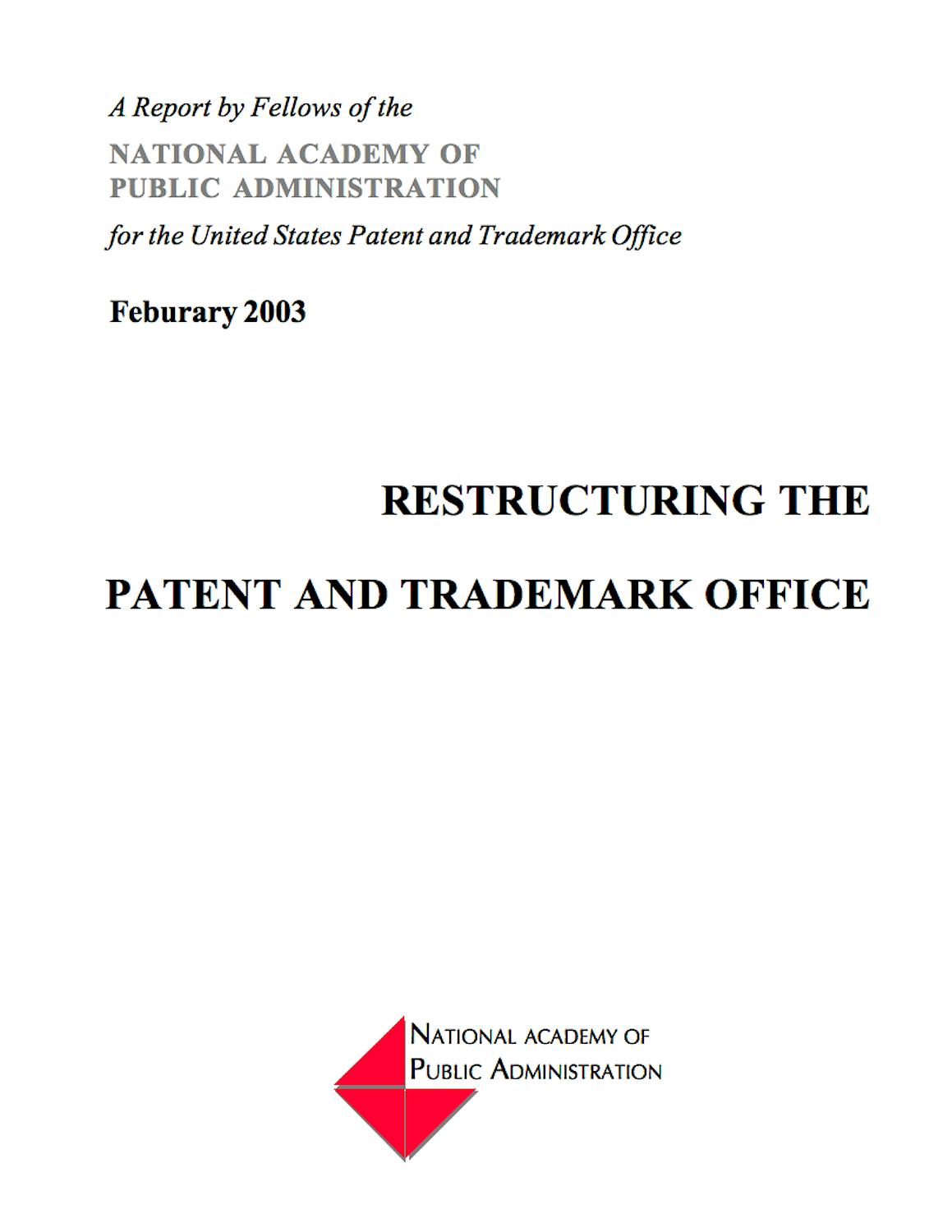
Restructuring the Patent Trademark Office
The United States Patent and Trademark Office (USPTO) has been struggling to respond effectively to this sharp increase in workload. Between FY 1991 and FY 2001, the patent examiner workforce increased almost 80 percent to accommodate an 83 percent increase in patent applications.
But patent examiner recruitment and retention problems impeded this staffing expansion. Over this same period, the annual attrition rate for patent examiners averaged 10.5 percent, substantially above the government-wide attrition rate for technical employees.
Click the button below to view the View Study Report.
View ReportKey Findings
USPTO has asked the Academy to assist in this transformation process by:
- Comparing the agency’s current authorities and status as a performance-based organization (PBO) with that of a federal corporation.
- Examining its current user fee structure and proposed reforms.
- Reviewing its major functions in the context of current inherently governmental policies.
Recommendations
Three previous Academy studies of USPTO concluded that the agency met the criteria for establishing a federal corporation and would benefit from the enhanced operational and financial flexibility accorded most government corporations. The current study team strongly agrees with these previous findings. While the PBO legislation was a step in the right direction, the study team believes that a government corporation remains the best organizational form for the USPTO because it could enhance significantly its capacity, flexibility, efficiency, and effectiveness.
In addition to gaining enhanced status and visibility as a government corporation, the study team believes a USPTO corporation should:
- Be operationally and managerially independent, but otherwise subject to the policy directionof the Secretary of Commerce;
- Be subject to the Government Corporation Control Act;
- Have independent litigating authority;
- Continue to issue its own regulations;
- Retain its current governance structure, and exemptions from FTE ceilings, federal procurement and contracting regulations, and the Federal Property and Administrative Services Act;
- Have access to all user fees and authority to set fees subject to legislative guidelines;
- Have some form of borrowing authority; and
- Continue to be exempt from state and local taxes.
